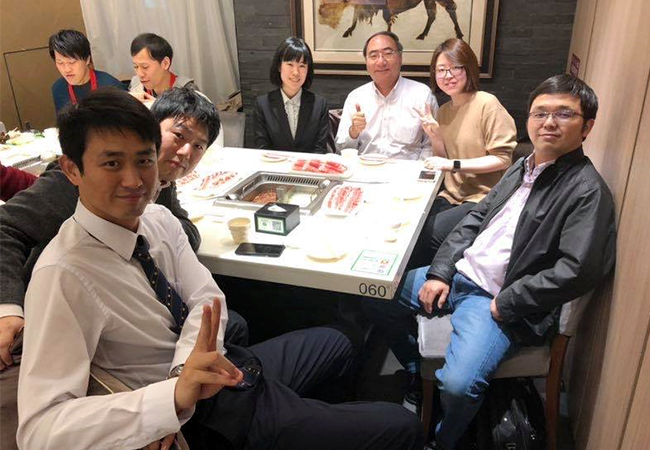Artificial photosynthesis using modal strong coupling between localized surface plasmon resonance and Fabry-Pérot nanocavity

Division of bioengineering and bioinformatics
Research Group of electronic science
Laboratory of green photonics
MC the second year
劉 言恩 (Yen-En Liu) (Nationality: Taiwan, Year of enrollment: 2018)
With the increasing population of human beings, energy insufficiency is recently an extremely severe issue. It not only cause inconvenience but also cause danger. Some people consider nuclear power to be dangerous, some consider thermal power to be pollution maker, while the green energies are improper or still immature for Japan, Taiwan, or even most of the areas in the world. In order to solve this problem, scientist has made effort to develop “artificial photosynthesis”. Photosynthesis is a well-known photoreaction done by plant, which transfer the solar energy, water and oxygen into stored energy, glucose. On the other hand, artificial photosynthesis is that human pursue to realize similar reactions using solar energy. By applying artificial photosynthesis, many kinds of fuel or useful chemical compound may be able to be produced with a low-pollution procedure, and that is one potential way to deal with energy insufficiency, since the solar energy is nearly exhaustless.
In our laboratory, we apply localized surface plasmon resonance (LSPR) of nano-scale gold to get the strong near-field enhancement of the incident light. Also, we develop modal strong coupling system between LSPR and Fabry-Pérot nanocavity to strongly confine the incident light inside the system, broadening its absorption region, and dramatically enhance the efficiency of photocurrent generation and artificial photosynthesis. Based on this research, I further investigate on the system consisting well-designed nanostructure, finding the effect of the parameters of the nanostructure, and try to design an optimized modal strong coupling system.
In our laboratory, we have a loose core time from 10am to 5pm, while members are free to arrange their schedule for experiment or discussion in or out of the core time. Moreover, we have article seminar once a week in the spring-summer semester, where students may share the papers they feel interested in to all the members. In addition, we don’t have regular weekly or monthly progress meeting, while we always hold a big group meeting every half year. However, Misawa sensei, my supervisor, usually individually discuss with group member irregularly. Also, every member could invite Misawa sensei or other instructor for discussion any time when they are free if they need advice, got confused, or even get into troubles.
In conclusion, as a Taiwanese M2 student, I think it is very fortunate for me to join this lab and do my research here. In our lab, members could keep on their research with enough freedom, a friendly atmosphere, and appropriate concerns. In addition, half of our members are foreign students/staff. Therefore, foreign students don’t need to worried about not be able to integrate themselves inside. Those are the reason why I have decided to go to doctor course the same in this lab straightly from next April. Hope the information above may be helpful to you, and provide a direction to you for planning your future. Good luck!


